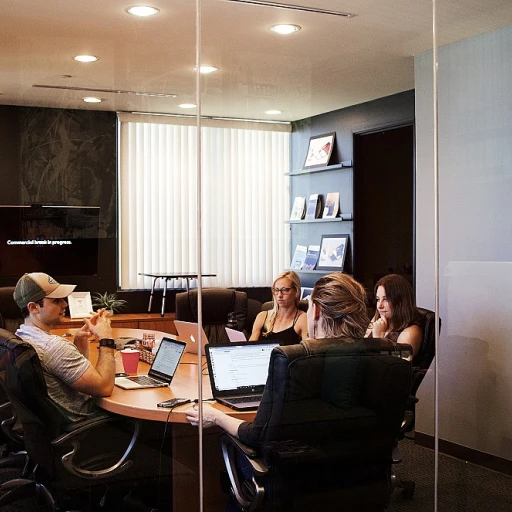
Understanding the procurement process in UK offices
Key Elements of Procurement in UK Office Settings
Procurement in a UK office environment involves a series of strategic activities designed to acquire goods and services that support the organisation’s goals. The process is not just about placing orders; it’s about ensuring that every step, from identifying needs to managing supplier relationships, is efficient and aligned with best practices. A thorough procurement assessment helps identify areas for improvement and potential risks, making it easier to adapt to market changes and organisational growth.
Steps Involved in the Procurement Process
- Needs identification: The first step is to clearly define what goods or services are required. This involves collaboration across departments to ensure all requirements are captured.
- Supplier selection: Choosing the right supplier is crucial. This step includes evaluating supplier performance, assessing risk, and considering long-term supplier relationships.
- Order placement and contract management: Once a supplier is chosen, the next step is to place the order and manage the contract. Effective contract management helps mitigate risks procurement teams may face.
- Delivery and quality assessment: After receiving goods or services, it’s important to assess their quality and ensure they meet the organisation’s standards.
- Payment and record keeping: Timely payments and accurate data management are essential for maintaining strong supplier relationships and supporting future procurement activities.
Why Assessment Matters
Regular procurement assessment is vital for identifying bottlenecks, inefficiencies, and potential risks within the supply chain. By reviewing each step, office managers can ensure the procurement process remains effective and supports the organisation’s strategic objectives. This approach also lays the groundwork for continuous improvement and risk management, which are essential for long-term success.
For more insights on enhancing team efficiency and optimising procurement activities, you may find this article on enhancing team efficiency in UK offices helpful.
Identifying bottlenecks and inefficiencies
Pinpointing Barriers in Your Procurement Workflow
A thorough procurement assessment in any UK office environment involves more than just reviewing order forms and supplier contracts. To truly identify bottlenecks and inefficiencies, it is essential to map out each step of your procurement process. This means looking at how goods and services are requested, approved, sourced, and delivered within your organisation.- Data-driven analysis: Gather data on procurement activities, such as average order processing times, approval delays, and supplier response rates. Analysing this data will help you spot recurring issues and areas for improvement.
- Risk assessment: Evaluate potential risks at each stage of the process. This includes risks procurement teams face, such as supply chain disruptions, compliance gaps, or inconsistent contract management.
- Stakeholder feedback: Engage with staff involved in procurement to understand their challenges. Their insights can reveal hidden inefficiencies or outdated practices that impact the overall procurement strategy.
Common Signs of Inefficiency
Some typical indicators that your procurement processes may need attention include:- Frequent delays in order approvals or deliveries
- Duplicate or unnecessary procurement activities
- Lack of clarity in supplier performance expectations
- Manual, paper-based steps that could be automated
Tools and Best Practices for Assessment
Implementing digital tools for tracking procurement steps can streamline your assessment. For example, employee monitoring solutions can provide valuable data on workflow bottlenecks and help you identify where processes slow down. For more on this, see enhancing employee monitoring. Regularly reviewing your procurement strategy and risk management approach will ensure your organisation remains agile and competitive in the market. By identifying inefficiencies early, you can take strategic steps to strengthen supplier relationships, improve contract management, and support long-term continuous improvement.Ensuring compliance with UK regulations
Maintaining Compliance and Managing Risks in Procurement
Ensuring compliance with UK regulations is a vital step in any procurement process. The UK regulatory landscape is complex, covering areas such as public procurement rules, anti-bribery laws, data protection, and contract management. A thorough procurement assessment will help your organisation identify potential risks and areas for improvement, supporting both legal compliance and effective procurement activities.
- Risk assessment: Regularly assess risks procurement may face, such as supplier insolvency, data breaches, or non-compliance with market standards. This step involves reviewing supplier contracts, order processes, and the supply chain for vulnerabilities.
- Contract management: Keep contracts up to date and ensure they reflect current regulations and your organisation’s procurement strategy. This will help manage supplier relationships and reduce long-term risks.
- Data management: Handle supplier and procurement data in line with UK GDPR requirements. Secure data storage and transparent processes are essential for compliance and risk management.
- Continuous improvement: Regularly review procurement processes and update procedures to reflect changes in legislation or best practices. This supports strategic sourcing and strengthens your organisation’s risk management framework.
Leveraging technology can make compliance easier and more reliable. Automated systems help track procurement activities, flag potential risks, and ensure documentation is complete. For practical insights on how business process automation can enhance compliance and efficiency, see this resource on business process automation consulting.
By embedding compliance and risk management into your procurement processes, your organisation will be better positioned to identify issues early, maintain strong supplier performance, and support long-term strategic goals.
Evaluating supplier performance and relationships
Measuring Supplier Performance for Strategic Value
Assessing supplier performance is a vital step in the procurement process for any UK office. This activity involves more than just checking if goods and services arrive on time. It is about understanding how each supplier contributes to your organisation’s goals, minimising risks, and supporting long-term procurement strategy.
- Data-driven assessment: Use data from order histories, delivery timelines, and quality reports to evaluate supplier reliability. Analysing this information helps identify potential risks and areas for improvement in the supply chain.
- Risk management: Regular risk assessment of suppliers is essential. Consider factors such as financial stability, compliance with UK regulations, and their ability to adapt to market changes. This step will ensure your procurement activities are resilient and secure.
- Relationship management: Strong supplier relationships are key to effective procurement. Open communication and regular feedback sessions help address issues early and foster strategic sourcing partnerships that benefit both parties.
- Contract management: Review contract terms to ensure suppliers are meeting agreed service levels. This process supports continuous improvement and helps identify if renegotiation or alternative sourcing is needed.
By focusing on supplier performance, your organisation can identify inefficiencies, reduce risks, and align procurement processes with business objectives. These steps support a robust procurement assessment and help drive best practices across all procurement activities.
Leveraging technology for better procurement
Using digital tools to streamline procurement activities
In today’s UK office environment, leveraging technology is a key step for effective procurement management. Digital solutions can help organisations automate routine procurement activities, reduce manual errors, and improve data accuracy. This not only saves time but also ensures that the procurement process is more transparent and easier to assess.
- Automated order management: Modern procurement platforms allow teams to automate the order process, from requisition to payment. This reduces the risk of delays and helps identify potential risks early in the supply chain.
- Centralised data management: Storing procurement data in a single system makes it easier to track supplier performance, monitor contract management, and conduct regular procurement assessments. This approach supports better risk management and helps identify areas for improvement.
- Supplier relationship management: Digital tools can help you monitor supplier relationships and performance over the long term. This enables more strategic sourcing decisions and supports continuous improvement in your procurement strategy.
Benefits of digital procurement solutions
Implementing technology in your procurement processes brings several advantages:
| Benefit | Impact on Procurement |
|---|---|
| Improved visibility | Enables better assessment of procurement activities and identification of bottlenecks |
| Enhanced compliance | Helps ensure all steps meet UK regulations and internal policies |
| Risk reduction | Supports proactive risk assessment and management throughout the procurement process |
| Strategic decision-making | Provides data-driven insights for long-term procurement strategy and supplier selection |
By integrating the right technology, your organisation will be better positioned to manage goods and services procurement, identify potential risks, and drive continuous improvement. This step is essential for maintaining a competitive edge and ensuring best practices in your procurement processes.
Implementing continuous improvement strategies
Embedding a Culture of Ongoing Procurement Enhancement
Continuous improvement is essential for maintaining an effective procurement process in any UK office environment. This approach ensures your organisation stays competitive, adapts to market changes, and manages risks proactively. It involves regularly assessing procurement activities, supplier performance, and contract management to identify areas for improvement.- Regular Procurement Assessment: Schedule periodic reviews of your procurement processes. Use data from previous orders, supplier relationships, and risk assessments to pinpoint inefficiencies and potential risks.
- Feedback Loops: Encourage feedback from all stakeholders involved in procurement activities. This includes staff, suppliers, and management. Their insights can reveal hidden bottlenecks or opportunities for strategic sourcing.
- Benchmarking Against Best Practices: Compare your procurement strategy and supplier performance with industry standards. This step helps you identify gaps and set realistic targets for improvement.
- Risk Management Integration: Make risk assessment a routine part of your procurement process. Early identification of risks procurement can help you develop mitigation strategies before issues escalate.
- Training and Development: Invest in regular training for your procurement team. Keeping staff updated on the latest market trends, regulations, and contract management techniques will ensure your organisation remains compliant and agile.
Leveraging Data for Strategic Decision-Making
Effective procurement relies on accurate, timely data. By analysing procurement data, you can identify long term trends, monitor supplier performance, and uncover areas improvement. This data-driven approach supports better decision-making and strengthens your supply chain.| Step | Activity | Outcome |
|---|---|---|
| 1 | Collect procurement data | Comprehensive view of goods services ordered and supplier performance |
| 2 | Analyse for patterns and risks | Identify potential risks and inefficiencies |
| 3 | Implement changes | Optimised procurement processes and improved supplier relationships |
| 4 | Monitor results | Ensure continuous improvement and strategic alignment |













